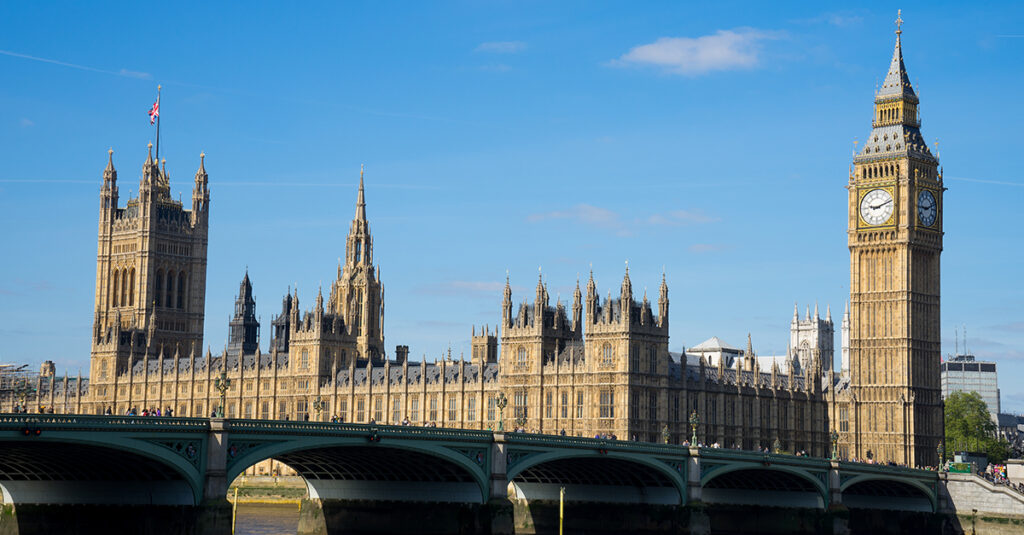A breakdown of the Autumn Statement and what it means for the labour market
The Autumn Statement presents a look back on the previous year and ahead for the year to come. On Wednesday the 22nd, Chancellor Jeremy Hunt announced 2024 plans for the UK economy and reflected on changes made in 2023.

Chancellor Jeremy Hunt broke down the Autumn Statement into three sections; covering the Office for Budget Responsibility (OBR) updates, plans to back British businesses and ‘make work pay’.
He began by saying that the government has taken difficult decisions to put the economy back on track and halve inflation, but “the work is not done”. The Bank of England’s strategy to raise interest rates to halve inflation seems to have worked as the inflation came down from a peak of 11% to 4.6%.
According to OBR forecasts, the inflation will fall as low as 2.8% by the end of next year and 2% by 2025.
Key findings from the ONS and points from the Chancellor’s Autumn Statement
- The employment level stands still at 75.7%, with over 30 million in the UK workforce.
- Compared with OBR’s unemployment forecast for Q3 (3.7%), the unemployment rate has reached 4.2%. In his Autumn Statement speech, the Chancellor promised extra help to those unemployed for over a year.
- Despite falling rapidly, vacancies in the UK are still above pre-pandemic levels and businesses are spending 6.1 weeks finding the people they need (according to Totaljobs’ Hiring Trends Index).
- Fortunately, inflation has fallen significantly in Q3, boosting real pay by 1.3% year on year.
- The UK is experiencing slower growth, with no growth in GDP in Q3 and forecasts from the OBR showing 0.6% growth this year and only 0.7% next year.
- The Chancellor put emphasis on the need to bring more workers into the workforce in a bid to improve growth. Hence, his plans include eradicating low pay, encouraging long-term sick and people with disabilities on benefits to work and increasing the national minimum wage from £10.42 to £11.44.
- Along with tax cuts for workers, Chancellor Jeremy Hunt announced tax cuts and tax relief for British businesses to increase investment in R&D.
The Chancellor’s plans to support British businesses
The Chancellor addressed skills and labour gaps, promising 50 million in investment to increase the number of apprenticeships – especially for industries that are key for growth and are experiencing labour shortages.
In his Spring Budget speech back in March, the Chancellor had announced plans to establish 12 investment zones across the country. In his speech on Wednesday, he announced he would extend the financial incentives from five to ten years. Mr. Hunt said he would also add three more investment zones in the West Midlands, East Midlands, Greater Manchester, and a second investment zone in Wales.
He also announced that businesses would benefit from ‘full expensing’ permanently, meaning businesses would offset their investments. He added there would be a new tax relief for research and development, combining the existing R&D Expenditure Credit and SME schemes.
The Chancellor said he wants to reform taxes paid by the self-employed, by making “class 2” national insurance contributions voluntary. For small businesses, he promised to freeze the small business multiplier for another year.
The Chancellor also said that he decided to extend the 75% business rates discount for Retail, Hospitality and Leisure businesses for another year, as well as freezing alcohol duty until August 2024.
Finally, the Chancellor said their plan was to make the UK an AI powerhouse.
‘Make work pay’
Chancellor Jeremy Hunt emphasised the importance of growth for the UK, and the necessity to increase contribution to the labour market to achieve it.
In his Spring Budget, the Chancellor had announced plans to bring more people into the workforce; which included plans to reform benefits for disabled people. He started the second part of his speech by saying they will reform the Work Capabilities Assessment to reflect greater flexibility and availability of home working after the pandemic.
The Chancellor also announced £1.3 billion of funding to offer extra help to the 300,000 people who have been unemployed for over a year without having sickness or a disability. He added, “But we will ask something in return. After 18 months of intensive support jobseekers have not found a job, we will roll out a programme requiring them to take part in a mandatory work placement to increase their skills and improve their employability.”
He then addressed the issue of low pay, announcing the increase in the statutory National Minimum Wage for those aged 21 and over to £11.44 from April 2024. The Chancellor’s plans also include cutting national insurance from 12% to 10% from January 6th next year.
Labour Economist Julius Probst commented:
The tax cut to National Insurance is providing a welcome relief for workers who have seen their living standards fall in recent years. However, the tax cut is somewhat regressive. Low-income earners just above the £12,570 tax allowance will see little of these gains. High-income earners who earn over £50,270 will see a more substantial annual tax decrease.
In reality, the overall tax burden has increased in recent years. With inflation in the double digits until earlier this year and nominal wage growth in excess of 7%, most workers have seen their tax burden rise due to higher incomes. This stealth tax is particularly affecting people whose income has surpassed the 50,270 tax threshold, causing them to pay the higher rate of 40%.
To make things worse, some workers face marginal tax rates in excess of 70%, depending on the number of children they have, because of the high-income child benefit charge. These UK tax cliffs will therefore continue to have perverse incentive effects on workers.
Julius ProbstLabour Economist
Totaljobs’ overview of the recruitment landscape
Our latest Hiring Trends Index (Q3 2023) takes an in-depth look into the economic outlook of the UK with a focus on green jobs. This edition provides an understanding of the demand for green jobs and skills by businesses and candidate attitudes regarding green employers.
According to our data;
- More than a third (36%) of businesses increased recruitment in the third quarter of 2023.
- 59% of businesses are confident they will recruit the people they need in Q4 2023, rising from 53% reported in Q4 2022.
- According to Totaljobs data, despite a general slowdown in hiring, the demand for green roles continues to increase (677% between 2019 and 2023).
- Over 1 in 5 (23%) companies are increasing the number of green roles within their business.
- Over half (58%) of companies have or are in the process of implementing a sustainability framework. Among businesses that have already established one, 84% report that their company has experienced benefits.
- The average time to hire stands at 6.1 weeks, which is lower than 6.4 weeks at the beginning of the year.

Totaljobs’ Hiring Trends Index rounds up the latest quarterly insights from the UK labour market and provides a first look at what’s happening in recruitment. In this edition, we look at the third quarter of 2023 with a focus on sustainability and green roles.
- Read our Hiring Trends Index to learn more about the demand in green roles and skills, and candidate expectations from employers when it comes to sustainability.

